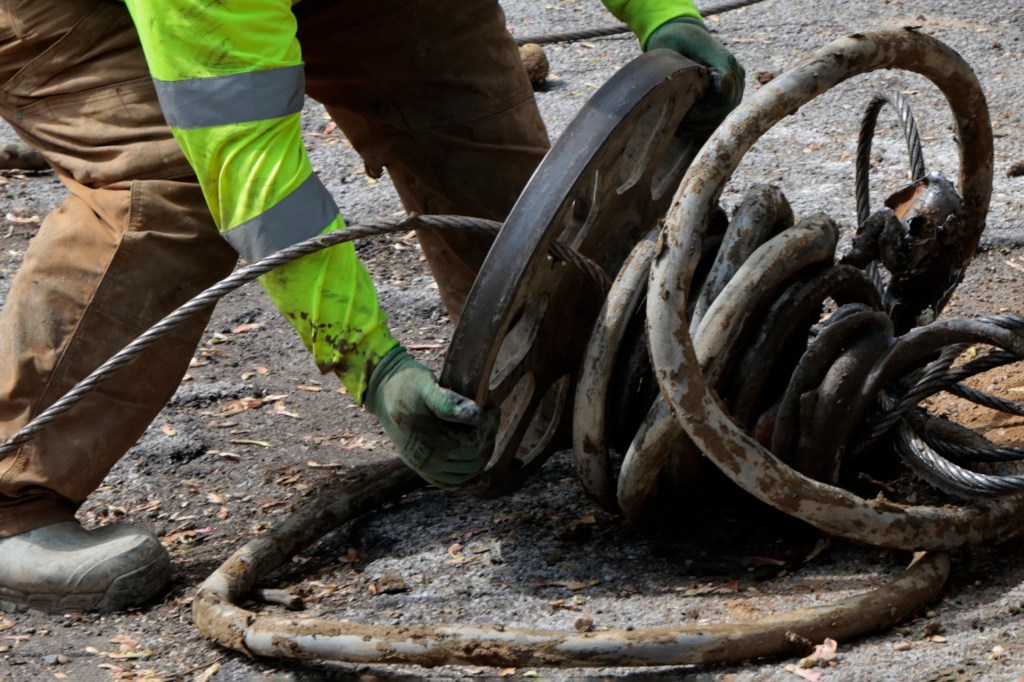Chicago must replace every toxic lead pipe connecting homes to water mains within two decades — an aggressive deadline imposed this week by President Joe Biden after his administration initially proposed giving city officials twice as long to complete the job.
The more stringent requirement is part of a broader package of changes in federal regulations intended to protect Americans from a metal so dangerous it is unsafe at any level of exposure.
More than 9 million homes nationwide get drinking water from a service line made of lead. Chicago has more than 400,000 of the toxic pipes, by far the most of any U.S. city. Illinois has more than any other state.
Biden, who will speak about the new regulations Tuesday in Wisconsin, promised during his 2020 campaign to accelerate service line replacements after decades of inaction from federal and state officials. One of the big infrastructure bills his administration brokered with Congress earmarked $15 billion toward the effort. Billions more will be needed in Chicago alone.
“This is a matter of public health, a matter of environmental justice, a matter of basic human rights, and it is finally being met with the urgency it demands,” Michael Regan, administrator of the U.S. Environmental Protection Agency, said Monday during a call with journalists.
So far the Chicago Department of Water Management has replaced only 5,844 of the city’s lead service lines. In a statement, the department said there isn’t enough money, equipment or trained workers to meet the Biden administration’s mandate, which will require about 20,000 replacements every year.
The dangers of leaving lead pipes in the ground are clear. Ingesting tiny concentrations of the metal can permanently damage the developing brains of children and contribute to heart disease, kidney failure and other health problems later in life. One study estimated more than 400,000 deaths a year in the U.S. are linked to lead exposure.
Since 2016, lead has been detected in every one of the more than 42,500 water samples analyzed by the water department. High levels have been found in tap water throughout the city, according to a department spreadsheet of results from free testing kits distributed to homeowners.
Yet until now federal regulations haven’t required Chicago to do anything other than add corrosion-fighting chemicals to the water supply.
The chemicals form a protective layer intended to prevent lead from leaching out of pipes. But studies in Chicago and other cities during the past decade found the treatment can fail to work for a variety of reasons. As a result, lead-contaminated water can randomly flow out of faucets.
Unless drinking water is properly filtered, physicians and researchers say, the only way to avoid health risks is to pull lead service lines out of the ground.
Chicago faces such an arduous task largely because clout-heavy unions ensured the city’s plumbing code required lead service lines until Congress banned the practice in 1986. During the past decade, Chicago Tribune reporting documented how city officials ignored the widespread problem for years and likely made it worse.
For instance, during the mayoral tenures of Richard M. Daley, Rahm Emanuel and Lori Lightfoot, the city borrowed more than $500 million to replace water mains. On every block dug up, crews attached new cast iron mains to old lead service lines — a practice EPA researchers found can disturb the protective coating inside pipes and result in slugs of lead leaching into tap water for weeks or months.
Last year Mayor Brandon Johnson’s administration secured a $336 million federal loan to replace more toxic pipes. Another $14 million is earmarked to rid seven low-income census tracts of every lead service line.
In materials and presentations, city officials have projected it will take at least 50 years to finish the work. They’ve promised to replace at least 10,000 lead service lines a year starting in 2027.
The federal government wants more done faster. It remains unclear how such an ambitious program will be financed.
Most other cities will get a decade to replace lead service lines under revisions to the Lead and Copper Rule, a package of requirements adopted in 1991 but deemed largely ineffective by multiple federal scientific advisory panels.
The Biden EPA’s overhaul mandates more frequent testing of public water systems. In addition to sampling the first liter drawn at the beginning of a day, the agency is requiring utilities to sample the fifth liter drawn — a change that more accurately detects lead levels in water stagnating overnight in a service line.
Utilities will be forced to offer water filters to customers if three rounds of testing find 10 parts per billion or more of lead in 90% of the samples.
Replacing lead service lines and providing water filters is expected to cost up to $3.6 billion a year nationwide, but preventing lost IQ points among children and other health benefits are estimated to be worth up to $34.8 billion annually, EPA officials have estimated.
“This is a major public health advance,” said Erik Olson, senior strategic director for health at the nonprofit Natural Resources Defense Council. “It’s going to benefit tens of millions of kids and adults put at risk from lead in their water.”
